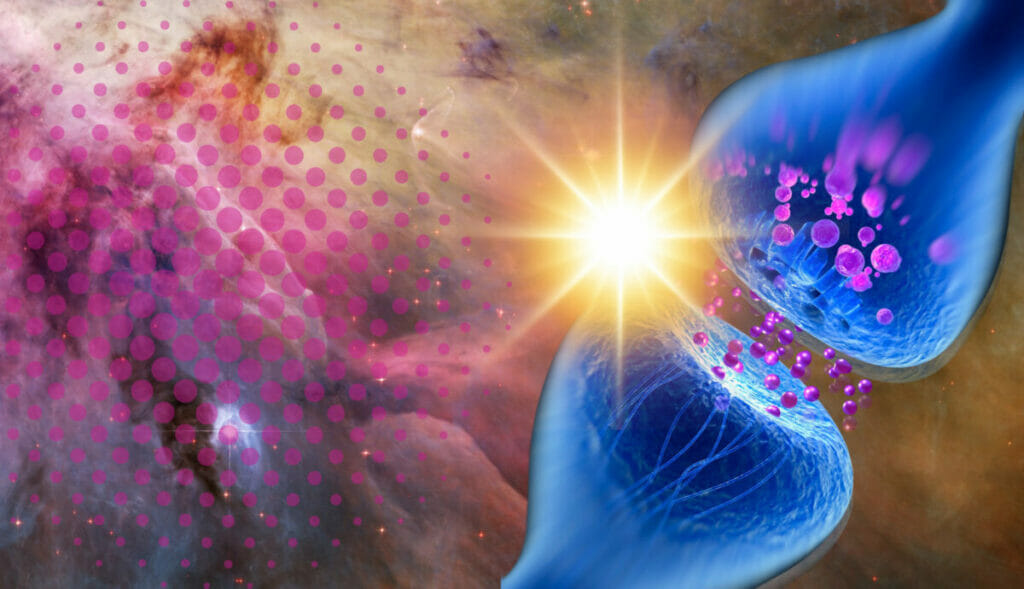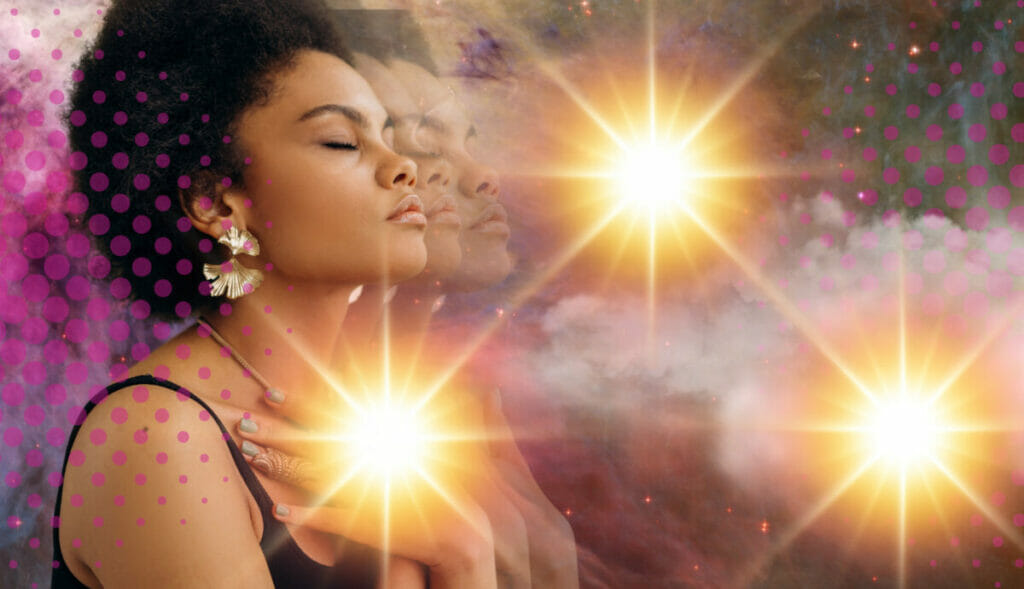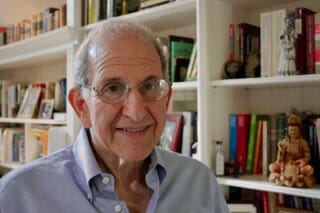Throughout history, mankind has been drawn to the profound realm of mystical experiences. Psychedelics have long been used to generate these experiences. Recent research suggests that when psychedelics are used to treat illnesses such as depression, addiction, or end-of-life anxiety in relation to cancer and other terminal illnesses, people who have mystical experiences during the treatment session have more positive outcomes.
Mystical experiences were fundamental to man’s religious experience in both the East and the West. They have informed speculations about the true nature of reality. The psychedelic space has been guided by the wisdom of Indigenous peoples, and central to their journey is the embracing of the mystical as used by shamans and healers.
Understanding mystical experiences can be approached in two ways:
1. Naturalistic Approach: Using science and logic to understand the inherent laws by which the universe runs. This approach might be taken by those who see the nature of the world as explainable by cause and effect relating to the laws of science.
2. Transcendent Approach: Based on the assumption of a universe run by a higher intelligence and not subject to inherent laws. A transcendental approach may be seen to be more compatible with religion and spirituality.
Core Features of the Mystical Experience
Much of the basis for this discussion of what is traditionally considered the core features of the mystical experience, comes from philosopher Walter Stace’s work Mysticism and Philosophy and philosopher and psychologist William James’ The Varieties of Religious Experience.
The core features of a mystical experience include:
1. A Non-Ordinary State of Consciousness
A non-ordinary state of consciousness is profoundly different from the ordinary, mundane everyday experience. It generates a sense of timelessness and a loosening of the sense of relatedness to the outside world occurs — a blurring of what’s inside and what’s outside. There can be a loss of one’s sense of self — ego dissolution or ego death are commonly used terms to describe this.
Mystical experiences can occur in religious as well as non-religious circumstances, coming unbidden in the midst of everyday life. They can happen as a part of meditation, as a result of practices such as sensory deprivation, holotropic breathwork, and of course as a result of taking psychedelics.
Mystical experiences may also occur in moments of deep intimacy in relations between two people. For instance, as might take place in a psychotherapy relationship during a session. The psychoanalyst Alice Bar Ness has discussed the possibility that a mutually occurring mystical experience might be generated by the therapist and client in a psychoanalytic therapy. Recognizing this type of experience can be of great value in therapy.
2. Feeling of Connectedness
One core feature of the mystical experience has been described as that of an interconnectedness between all persons and things in the universe. Feelings of beneficence and love often but not always predominate. There is often a feeling of a deep connection to nature. In a more religious context, there can be a sense of connectedness with God or with some aspect of the Divine. William James described it as “becoming one with the Absolute.” Stace describes this form of “looking outward through the senses” as an extrovertive mystical experience.
An introvertive mystical experience, on the other hand, occurs when one looks inward, into the mind. Rather than becoming one with all that is out in the world, mystical unity occurs as a dissolution of one’s sense of personal identity. This can result in what has been described as a ‘pure consciousness experience’ in which there are no longer thoughts, memories or perceptions but yet one is still somehow aware. This state is a common goal of eastern religious meditative experience.
It should be noted that there is controversy about the existence of a pure consciousness experience. “Consciousness is always consciousness of something to a subject […]. Thus, […] there can be no experiences free of any content.”
3. Ineffability
Mystical experiences, often described as ineffable, reflect a reality that transcends words and logic. As per William James, they are deeply emotional and cannot be transferred, and must be experienced directly. They can’t be put into words and communicated to another. Both transcendent and naturalistic viewpoints acknowledge ineffability as a crucial part of the mystical experience and despite being indescribable, humans naturally seek to express these profound emotions, leading to the creation of myth, poetry, and art.
4. Transformative Revelation
People having had these experiences have a sense of having received a deep and transformative knowledge about the most profound nature of reality. As James said, “They are states of insight into depths of truth unplumbed by the discursive intellect. They are illuminations, revelations, full of significance and importance…” The term used to describe this type of knowledge is noetic. It is important to understand the idea that the received knowledge is not obtained by use of the rational intellect or by logical thinking. Noesis rather involves a sudden, intuitive flash of insight, a revelation about the deepest truth. This is a consistent feature of some Eastern traditions—Zen ‘satori’ being one example and of course revelation is an integral feature of Abrahamic religion.
5. Paradox
Mystical experiences often entail paradox, situations where opposing statements both appear to be true and yet exclusive of one another. As an example, consider, as discussed above, that mystical experience can involve receiving a deep and transformative knowledge as a result of an encounter with the Absolute (which is paradoxically said to be ‘beyond knowing‘). Contemplation of paradox is a common feature of Eastern tradition. The Zen koan is an example.

Some Naturalistic Approaches to Understanding the Mystical State
1. Depth Psychology
Traditionally, psychology has used a naturalistic approach in trying to understand mystical experience. This field is notably associated with Sigmund Freud and psychoanalysis, despite Freud’s denial of the mystical. Depth psychology explores the relationship between the conscious and unconscious mind. Speculation about the nature of the unconscious goes back well before modern-day psychology and has been addressed by every human civilization both East and West. Psychoanalysis is one form of depth psychology. It is, of course, notably associated with Sigmund Freud although, in most of his work, he denied the significance of the mystical.
The connection between mystical experience and psychoanalysis, both from a theoretical and clinical standpoint has however, been fruitfully taken up by some modern psychoanalytic thinkers.
There are a group of psychoanalysts known as the psychoanalytic mystics. One of the most prominent is Michael Eigen who regards the mystical process as a model for psychotherapeutic change.
Eigen and others have looked at traditional psychoanalytic concepts through the lens of mystical tradition. One such concept is the idea of very early infantile experience with the mother as a fundamental cause of the development of the ‘self’.
Some conceive of the infant’s experience at this stage of development of the self as including states of blissful union with the mother during nursing, alternating with feelings of terror and rage when hungry or cold or alone and then again blissful union when again cuddled and fed.
Disagreeing with early psychoanalysts who pathologize mystical experience as regression, Eigen sees these early, ‘primordial’ experiences of consciousness of self as an equivalent of the mystical experience per se.
This description of the infant’s experience has been seen by Eigen and others as “the prototype of the death-and-rebirth process.”Eigen correlates this with the recurrent mythical theme of death and rebirth as described by for example Joseph Campbell.
Alice Bar Ness has used Martin Buber’s concept of the I-Thou relationship as a basis for the idea that both therapist and client might undergo a mystical experience during a psychotherapy session. Buber considered the I-Thou relationship as a deep, meaningful experience occurring between two people such as might occur in a person’s experience of the divine. These experiences can be ineffable, noetic and transformative and so can be considered mystical. They can be utilized to great advantage in a psychedelic therapy setting where the material which arises during these moments of mystical communion can resonate with the client’s experiences which might have arisen while in the psychedelic state.
2. The Jungian Perspective
The psychedelic space has made much reference to Carl Jung’s theories, notably his concept of archetypes. There are differing views as to the exact nature of archetypes however, they are commonly seen as symbolic representations of biological instincts manifest as images occurring in dreams and fantasies. Jungian James Hillman described these images as having autonomous personalities. His descriptions seem at times similar to the often-described psychedelic entities encountered during DMT experiences.
3. Neuroscience and Cognitive Psychology
The relationship between the mind and the brain has long been discussed by philosophers and theologians. Neuroscience and cognitive psychology have tried to answer this question, also termed as “the hard problem” – can mind function be reduced to neural activity? Seen through the lens of naturalism, it has been taken up by neuroscience and cognitive psychology using modern technology.
Neuroscientists, using functional magnetic resonance imaging (fMRI), can generate images of changing brain activity during meditation and after dosing with a psychedelic substance. Cognitive science has developed a series of psychometric tools such as the Mystical Experience Questionnaire which, using mystical experience criteria as outlined by Walter Stace, can reliably determine the occurrence of these experiences in subjects involving studies of psychedelics and meditation.
Research on the neural correlates of the mystical experience explores the effect of psychedelics and meditation on neural networks in the brain. Neural networks are webs of neurons which carry out specific, information processing functions. Individual networks can be widespread or ‘large-scale’, that is, a connection between groups of neurons located within the brain at a longer distance from each other. Networks can also be more localized or ‘small-scale’, consisting of interconnected neurons which are spatially adjacent. The often-mentioned default mode network is an example of a large-scale network. Other large-scale networks include the salience network and the dorsal attention network. Together, neural networks interact in complex ways to create our experience of the world including one’s sense of self as well as the boundaries of this self. Psychedelics break down existing connectivity within both local and large-scale networks and increase connectivity between networks not previously connected.
As a result of these changes, the brain is able to respond to stimuli in a more diverse and adaptable way. This translates into the distinctive sensory and cognitive phenomena commonly described during the psychedelic experience and may result in loss of sense of self and of one’s place in time and space – all elements of the mystical experience.

A Transcendental Approach to Understanding the Mystical State
Some Jungians and the transpersonal movement view the mystical experience as arising from higher states of consciousness and spiritual realms, not explainable by using rational, scientific concepts. In this view, “reality consists of multiple levels which mirror each other” in some way, commonly referred to as “correspondence.” Connections between these multiple levels are animated by a universal force which underlies the cosmos, also referred to as cosmic consciousness.
Correspondence between ‘multiple levels of reality’ gives rise to the idea that the universe or heavens (macrocosm) is reflected in the essential makeup of the human being (microcosm). Furthermore, this connection may influence interactions between different levels of reality. These concepts can be used to explain the core experiences and underlying nature of the mystical experiences. Additionally, they provide a “theoretical basis for astrology, alchemy and magic.”
These concepts can be illustrated by examples from the Western Esoteric tradition. For instance, the German mystic Jacob Boehme [1575-1624] describes the key to wisdom about God comes about by “looking within one’s self-consciousness, gazing upon, knowing and feeling all that formerly was [conceived of] as beyond.” Here, the mystical experience arises when contemplating the existence of the divine within – a connection between the macrocosm and the microcosm. This can be considered a form of interoceptive mystical experience.
The writer and composer Hildegard of Bingen [1098–1179] wrote about her mystical visions throughout her life. She described a vision in which “my soul rises up high into the vault of heaven and into the changing sky and spreads itself out among different peoples, although they are far away from me in distant lands and places.”. Here is an example of exteroceptive mystical experience.
The Jewish mystic Abraham Abulafia developed a form of meditation involving repetitive utterance of Hebrew letters signifying the divine names of God. This enabled him to enter a higher state of consciousness in which souls “return to their origin which is one without duality… towards the original unity.”
Carl Jung’s [1875-1961] mystical visions are described at length in Memories, Dreams, and Reflections and in The Red Book. While Jung’s work can be seen naturalistically and transcendentally, his personal experiences are considered to be of a transcendent nature. In fact, Jung himself considered his writings to be of a transcendent nature.
A better understanding of the mystical experience can be beneficial to the psychedelic space. While the two approaches discussed here may appear to be fundamentally incompatible, they both offer valuable insights and can complement each other.
Psychoanalysis has much to offer when seen through the lens of mysticism but also in a more straightforward consideration of its basic theory and clinical practice. As an example, psychoanalysis has long considered the problem of boundary crossings and violations as they occur in the analytic relationship. This has significant relevance to attempts at harm reduction in psychedelic therapy.
Finally, the examples of transcendent experiences are taken from writings that are part of the Western Esoteric tradition. A greater understanding of the history of these traditions as related to mystical experience would greatly benefit the psychedelic community.

